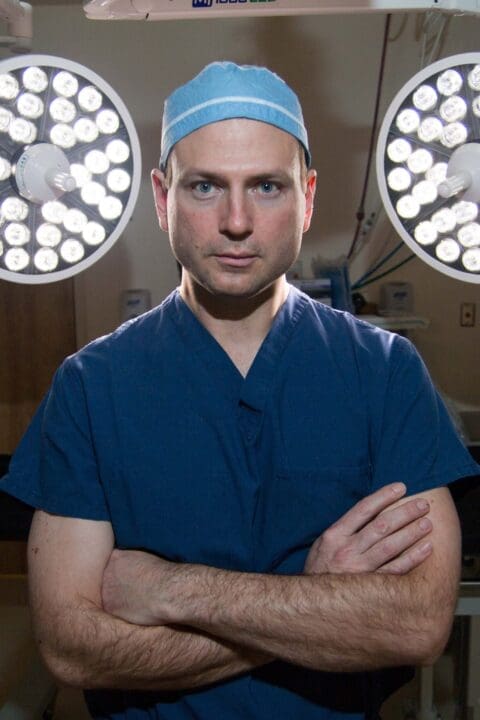DEGENERATIVE JOINT DISEASE: TYPES OF JOINT DEGENERATION
Osteoarthritis
Inflammatory Arthritis
Post-Traumatic Arthritis
Avascular Necrosis
Degenerative Joint Disease: Treatment
Treating various types of joint deterioration will depend on the type and severity of the joint damage, as well as the patient’s age, health, and needs.
Severe cases of cartilage damage may require surgical joint replacement. Dr. Allison is a renowned leader in performing pediatric hip replacements for children, as well as traditional hip replacement procedures for older patients. Performing joint replacement on patients of any age requires expert training and skill in order to not only reduce pain, but to restore function based on the specific needs and goals of each patient.
Anterior hip replacement is a minimally invasive technique used to perform a traditional joint replacement, in which the muscles and nerve tissue are pushed aside rather than dissected to ensure quicker recovery.
Revision joint replacement is performed when a previous joint replacement surgery requires surgical adjustment or correction. This type of procedure is often necessary if a patient has suffered physical trauma.
Alternatives to hip replacement include conservative options such as lifestyle changes, weight loss, pain management, wearing braces or sleeves to support the joints, taking vitamin supplements, and physical therapy.
If the soft tissue coverage that surrounds a joint is injured, it may be necessary to surgically reconstruct the ligaments, cartilage, tendons, nerves and muscle tissue. Soft tissue damage may occur as a result of traumatic injury or even tumors. Dr. Allison and his interdisciplinary team have the skill and training necessary to expertly perform surgical reconstruction of musculoskeletal systems.
Read more about arthritis pain from cdc.gov
What are Liposarcomas
There are several different types of liposarcoma, each with their own unique cellular origin and behavior:
Well-differentiated (40%) – most frequently diagnosed
Myxoid /round cell (30%) – malignant tumor
Pleomorphic (15%) – affects adults age 50 to 70 and develop as a side effect of radiation treatment
Dedifferentiated (5%) – least common subtype and can change over a period of time
One of the greatest challenges with liposarcoma, and other sarcoma subtypes, is the scope of subtypes, with each having separate characteristics and behavior. A liposarcoma surgery expert like Dr. Allison in Los Angeles is skilled in navigating the complexities and tendencies of the disease is best qualified to treat this condition.
Soft tissue sarcomas are rare cancers overall, but within the soft tissue category, liposarcoma ranks as the second most frequently diagnosed and tend to develop into a large soft tissue mass often with smaller tumors scattered around it.
What are the Symptoms
If the primary tumor develops into a significant size, it can pressure surrounding organs and muscles, creating pain and discomfort plus additional symptoms of:
-
- Nausea
- Fatigue
- Swelling
- Numbness
- Limited range of motion
When the cancer is suspected, diagnostic tests such as x-rays and MRIs are performed. X-rays are particularly helpful in identifying calcification in the tumor and damage to nearby bone. An MRI can reveal the location, size, and appearance of the soft tissue tumor and also help guide the doctor in the biopsy.



![pexels-cottonbro-5723882-scaled[1]](https://b4057808.smushcdn.com/4057808/wp-content/uploads/2022/04/pexels-cottonbro-5723882-scaled1.jpg?lossy=2&strip=1&webp=1)